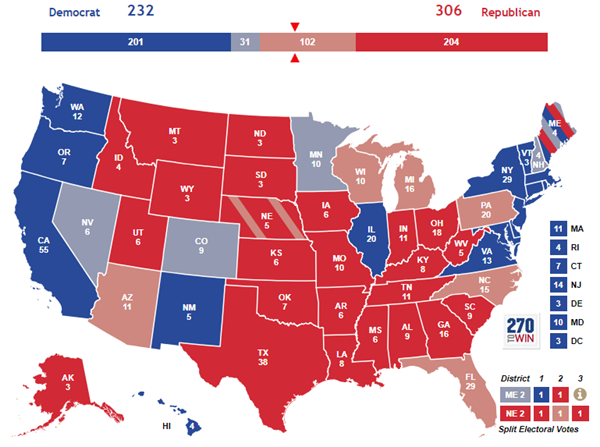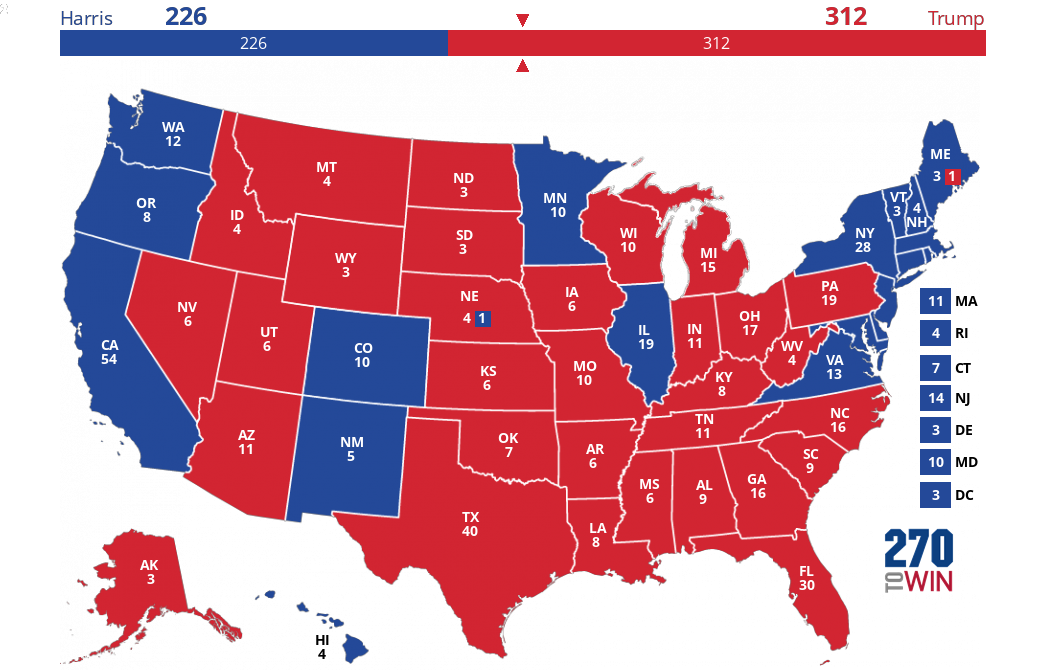2020 Electoral Map: Color Palette, with Tilt Ratings & 3rd Party now Available
By 270toWin Staff
January 18, 2019
The Map Color Palette, which was added to the congressional and gubernatorial interactive maps in 2018, is now available on the 2020 Electoral Map. The palette is located to the right of the electoral map, and includes options for tilt Democratic, tilt Republican and 3rd party.
Changing State(s) on the Map
Use -/+ buttons in the color palette area to display the ratings options you want to use. This can be changed at any time. As before, you can click a state repeatedly to change its rating. What's new here is that the rotation will only cycle through the ratings visible in the palette. So, if you only want to do a safe/toss-up map, there's no longer a need to cycle through all the other colors.
Alternately, select a single rating in the palette by clicking or tapping it. A small check mark will appear. This is now the active color. Any states you change will switch to that rating. To change the active color, just select a different one. You can return to 'rotation mode' by clicking the active color again (the check mark will disappear).
3rd Party
A single rating is available for a 3rd party candidate. To use the 3rd party color, click or tap the 3P box in the color palette. A check mark will replace 3P, and it will function as any other rating, as described in the preceding paragraph. 3rd party is only available this way, it will not appear if you are rotating through the colors on a state.
Tilt Ratings
For those that want more precision in their forecast, we've added the tilt rating. Tilt sits between 'Leans' and 'Tossup'. In our 2016 Very Close map, all states decided by 5% or less are shown as tossup. In the image below, we've assigned those states to the winning 2016 candidate using the tilt rating. Therefore, in the aggregate, the map reflects Trump's 306-232 win*. Click the image for an interactive version.
For the new features, all the references to 'state' in this article also apply to the split districts capability in Maine and Nebraska.
* Trump and Clinton won states (and congressional districts in Maine and Nebraska) yielding this total. There were seven faithless electors in the 2016 presidential election. History will therefore record the 2016 electoral vote as 304-227 for Trump. As the occurrence of faithless electors is essentially random - if they occur at all - we ignore them in all our 2020 forecast maps.


